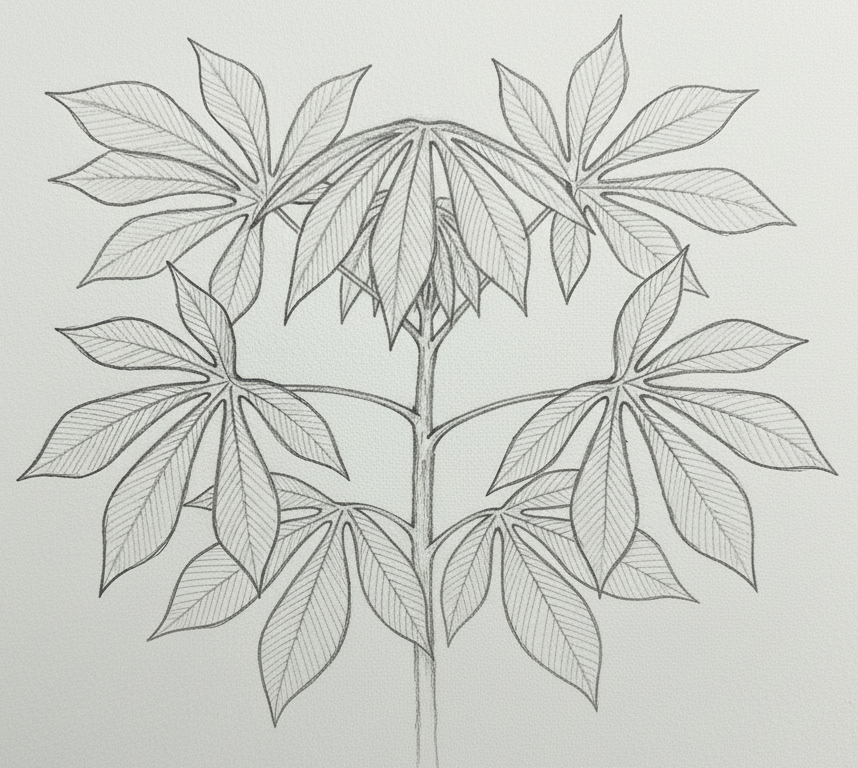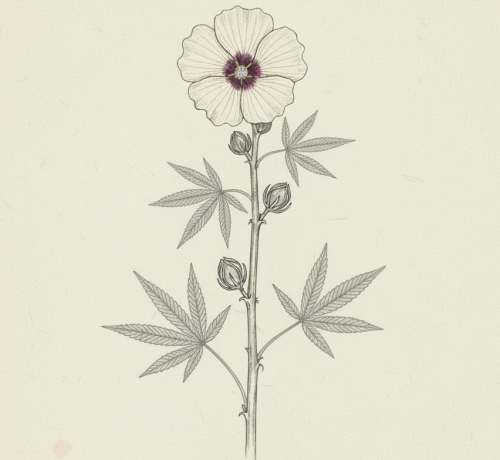The iconic, hand-shaped (palmate) leaves of the cannabis plant are widely recognizable, yet this distinctive morphology isn’t unique in nature. Many unrelated plants share a similar leaf structure, leading to frequent misidentification. This resemblance is typically a product of convergent evolution. Specifically, where different species independently evolve similar traits, rather than true biological mimicry.
What is Mimicry?
Plant mimicry is an evolutionary adaptation where one plant (the mimic) resembles another organism (the model) to deceive a third organism (the dupe), usually for survival or reproductive gain. There are four main types of plant-based mimicry.
Batesian Mimicry, where a harmless plant mimics a well-defended, unpalatable, or toxic plant to deter herbivores (e.g., a non-spiky plant having patterns that look like thorns).
Dodsonian Mimicry (or floral mimicry) involves a deceptive plant mimicking a rewarding flower of a different species to trick pollinators into visiting without offering a reward (a form of cheating).
Bakerian Mimicry is an intraspecific phenomenon where female flowers mimic those of the same species to deceive pollinators.
Protective Mimicry often involves camouflage (crypsis), such as stone plants (Lithops) which resemble pebbles to avoid being eaten by grazers, and can also include looking like bird droppings or having patterns that resemble spiderwebs to deter herbivores.
Mistaken Identity: Common Lookalikes
Several common plants can easily be mistaken for cannabis, especially when they are young or viewed from a distance. The confusion primarily arises from their deeply lobed or palmately divided leaves:
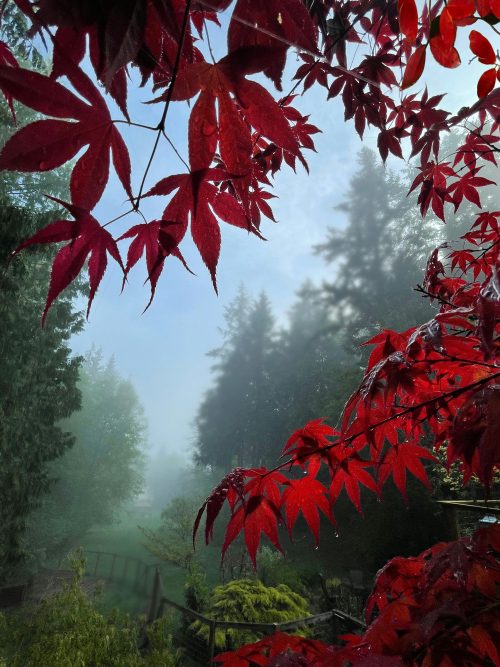
The Japanese Maple (Acer palmatum) is a popular ornamental tree whose leaves strongly resemble cannabis. A key difference, however, is that Japanese maple foliage often turns vibrant red, orange, or purple hues, unlike the consistent green of cannabis. Furthermore, the maple has a woody trunk rather than a flexible stalk.
Kenaf (Hibiscus cannabinus), a fiber crop, is such a strong lookalike that its botanical name references cannabis. Despite the leaf similarity, Kenaf gives itself away by producing large, showy yellow or scarlet hibiscus-like flowers. They are drastically different from the small, muted buds of cannabis.
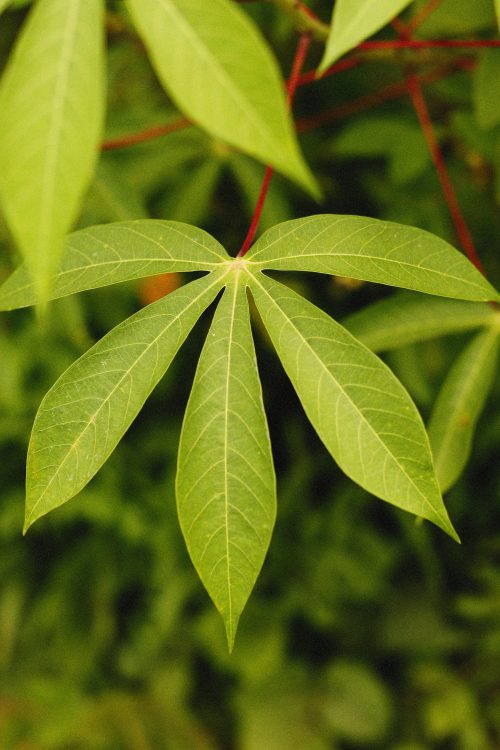
Cassava (Manihot esculenta), a tropical root crop, has palmately divided leaves that can look like those of a marijuana plant. A crucial distinguishing feature is that cassava will often exude a viscous, white latex when its tissues are damaged—a trait not found in cannabis.
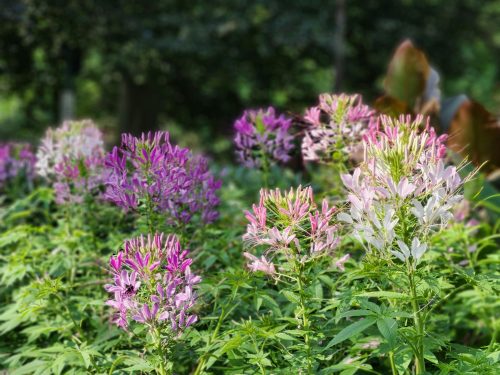
The Cleome (Cleome hassleriana), often called the Spider Flower, and the Texas Star Hibiscus (Hibiscus coccineus) are both ornamental flowering plants. While their leaf shapes are similar to cannabis, they produce prominent, elaborate flowers (fluffy pink or bright red, respectively) that quickly distinguish them from true cannabis plants.
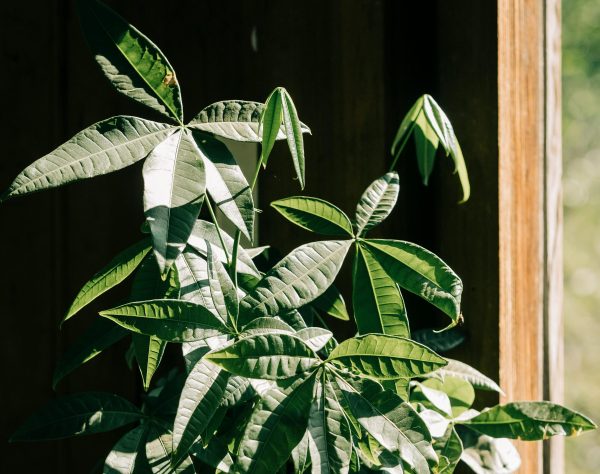
The Money Tree (Pachira aquatica) is similar to cannabis (Cannabis sativa) in leaf appearance because they are palmately compound, meaning the leaflets radiate outward from a central point, giving both plants a distinctive, hand-like shape.
Coincidence, Not Mimicry
While the visual resemblance is striking, there is no scientific evidence that these plants have evolved to look like cannabis as a defense mechanism (a form of Batesian mimicry). In a biological sense, mimicry is an adaptation where one species (the mimic) evolves to resemble another (the model) to deceive a third party (the dupe), often for protection from herbivores or to attract pollinators.
♦ Interested in trying high-quality CBD edibles for yourself? Check out the FGE shop ♦
The lookalikes of cannabis are not trying to fool herbivores; their leaf shape is simply an efficient form for their respective families. However, this visual similarity has significant human implications. Specifically, illegal growers use the camouflage of these botanical impostors and have frequently triggered false alarms of illicit cultivation from neighbors and authorities.

